August 2019, Vol. 246, No. 8
Pigging Update
Using ILI Technologies to Identify Pipeline Pilfering
By Ben Corlett, Baker Hughes, a GE company, UK and Andrea Bologna, TECMA Srl, Italy
Illegal tapping and product theft are an increasingly significant threat to pipeline operators. In-line inspection (ILI) technology – magnetic flux leakage (MFL) tools, in particular – have a proven history of accurately locating illegal tap locations.
The extent of pipeline product theft is a major concern to the oil and gas industry, and the worldwide community. Pilferage activities, by tapping into pipelines, can cause significant environmental and commercial consequences, potentially leading to pipeline ruptures, potential human casualties, destruction of property and environmental damage.1,2
Product thefts have steadily increased over the past decade. Furthermore, thieves are becoming more proficient and use specially designed equipment to monitor whether the pipeline is running or not, its flow speed and product, so that they only steal the more saleable liquids from multi-product pipelines.1,2
This article looks at the various theft inspection solutions developed and implemented by Baker Hughes, a GE company (BHGE), and its partner company Tecma Srl. It reviews ILI technology as a theft inspection service, followed by an exploration of case studies showing how MFL tools have been used to successfully identify illegal tap sites.
MFL is a non-destructive In-line Inspection technique that has been widely used for four decades to inspect for the condition of oil and gas pipelines, usually to identify corrosion sites or weak points in the pipe wall. The applications of MFL technology have been developed and utilised by BHGE and its partner company Tecma to become a valuable inspection method in the identification and reporting of illegal taps.
From the perspective of being identified by an MFL inspection, illegal taps can be categorised in two ways: those that have a ferrous component, such as a steel full circular fitting, or welded attachment and those that are non-ferrous, such as an attachment or component that is made from a non-magnetic material.
By categorising illegal taps in these two ways, BHGE has employed the principal detection capabilities of MFL technology to identify and locate illegal taps and has had the application of this technology verified in practice.
Ferrous Taps
The most common form of illegal tap – and the easiest to identify using MFL technology – are those with a ferrous component, such as steel full circular sleeves or welded offtakes.
Illegal taps with an additional ferrous component create a decreased signal response in the primary sensors when applied to the magnetic field. The amount of magnetic flux that can be accommodated by the pipe wall and additional material is increased compared to plain pipe, and less flux is leaked from the pipeline at that location.
This additional ferrous signal is identified and classified during the analysis of the inspection data. The data can then be compared to known features and fittings on the pipeline from historic pipeline inspections or client pipeline records to determine if the identified feature may be an illegal tap.
The feature is highly likely to be an illegal tap if it is new compared to a previous inspection or is not known to the pipeline operator. Once a new fitting is identified, the location of the fitting can be viewed in geographic visualisation software to give more detailed location information to report to the pipeline operator.
Non-Ferrous Taps
Illegal taps with no ferrous components are more difficult to identify using MFL technology. However, the method for identifying these features relies on the MFL tool’s primary function – the ability to detect metal loss – and the enhanced ability of the fourth-generation MagneScan tool to accurately detect pinholes.
In cases of a reduction in metal in the pipe wall, the amount of magnetic flux the pipe wall can support is reduced, causing an increased amount of flux to leak out at this weaker point. This is detected by the primary sensors and the area of metal loss can be identified during the signal data analysis.
Although a non-ferrous attachment cannot be detected by the primary sensors, they can detect the drill hole from which the product is being released. Drill hole dimensions used to steal product from a pipeline typically fall into the Pipeline Operators Forum’s (POF) metal loss classification of pinholes.3
The enhanced resolution of BHGE’s new generation MFL technology provides the ability to detect through-wall pinholes down to 2 mm in diameter.4,5,6 The implications of this for pilferage detection means the precision of the MFL vehicle gives it the ability to identify non-ferrous illegal taps with drill holes down to this diameter.
‘Non-Through-Wall’
A further advantage of the MFL method of identifying illegal taps vs. leak detection systems is the ability to detect a non-through-wall drilling attempts caused by pilferage activity. The detection capability of the MFL tool helps to identify undetected, potentially critical, deep manufactured metal loss features in the pipeline, before the next ILI takes place.
‘Dormant/Sleeping’
A further advantage of this technology vs. leak detection systems is the ability to detect illegal taps that have been installed but not yet used, i.e., dormant or sleeping illegal taps.
These have been found in instances where the criminals who have installed the taps are later found to have been arrested or have chosen to “sell” the position to others. Using leak detection systems alone, pipeline operators would be unaware of these non-normalized off-takes fitted (welded or screwed) in a non-controlled fashion into their high-pressure pipeline.
During data processing, a software algorithm identifies individual areas of metal loss. Each metal loss signal in the data is “boxed.” Magnetic signal parameters are assigned to the box and, from these, the physical dimensions of the feature on the surface of the pipeline are predicted. One of these dimensions is depth.
To quickly identify potential illegal taps during the pilferage analysis, a screening pass of the boxes with a depth greater than 50% of wall thickness is initially carried out. When a metal loss feature with a predicted depth greater than 50% is identified, the signal is compared to historic inspection data, if available, to determine if it is new and, if so, whether it is a potential illegal tap.
For completeness, a full pass of the inspection data is also carried out, to compare historic inspection data and, if pipeline mapping data is available, the location is further assessed for its likelihood to be a pilferage site.
To verify the MFL tool’s ability to detect real pilferage features, BHGE and Tecma have developed a plan to periodically perform pull-through testing of discovered illegal taps, following a number of instances on pipelines in Europe since 2001.
In 2015, a 10-inch test spool was supplied by Tecma with four types of ferrous attachment, consisting of three tap features and one full circular clamp fitting. The spool contained three through-wall drill holes, ranging from 10 mm to 5 mm in diameter, simulating non-ferrous illegal taps seen when used to steal product from several European pipelines.7
Multiple pull-through tests were carried out using BHGE’s 10-inch MagneScan inspection vehicle at different velocities to assess the tool’s ability to detect the features. All seven features were identified during each pull-through run, including:
- Cast-iron tap fitted over a drill hole, with a non-ferrous, full circular clamp fitting
- ferrous attachment fitted over a drill hole
- three 5-10 mm through-wall drill holes
- ferrous attachment fitted over a drill hole
- ferrous attachment protruding into the pipeline
The results of these pull-through tests demonstrate the vehicle is proficient in detecting genuine pilferage attempts and techniques.
Case Study 1
In 2014, a farmer and a storage unit operator separately reported to police suspicious events that led to the discovery of two illegal taps, including one tap linked to a tank holding around 30,000 L of stolen product.
The pipeline owner mobilised its engineering and environmental experts to assess the two sites and collaborated with local authorities and police to minimise any risk to local residents and nature. It then asked if BHGE could help determine if there were any other illegal taps in the line.
BHGE ran an ILI, comparing results to another MFL inspection completed in 2006. Within seven days, the data analysis was complete and nine illegal taps were identified along the pipeline.
While the value of stolen product was estimated at over $70,000 US, the costs of potential asset and environmental damage could have reached well into the millions if the illegal fittings had failed before being safely remediated.
Case Study 2
Most illegal taps identified on recent BHGE inspections in Europe are in areas where there is surrounding cover, such as in hedgerows and tree lines. This is most likely due to the criminals not wanting to raise suspicion when installing and accessing the tap, but also them attempting to hide the tap from being visually discovered.
In 2016 BHGE carried out a pilferage inspection on a European pipeline using the vehicle. It had been targeted multiple times by thieves in the past, and the operator decided to carry out regular ILI inspections to identify changes and new features between consecutive inspections.
Several new features were detected and reported during the analysis and, in one location, two attachments were identified under a pipeline casing, near to a river crossing. Investigation by the pipeline operator confirmed these features were illegal taps, and the excavation highlighted the elaborate attempts of the thieves to disguise their illegal activity from visual discovery.
A manhole was used to access the pipeline, with a section of pipeline casing cut away. Illegal attachments were then welded to the exposed pipeline.
Despite attempts to avoid detection, the obvious differences between the two inspection data sets revealed the illegal taps, highlighting the need for technical pipeline inspections to identify hidden pipeline threats.
Case Study 3
In some cases, illegal taps stand out during data analysis. The taps are isolated, away from other pipeline fittings and are not visually similar to legitimate offtakes on the pipeline, and so can easily be distinguished.
However, thieves are becoming increasingly sophisticated in their attempts to avoid technical detection by pipeline inspection companies. One trend observed in BHGE inspections has been thieves installing illegal taps in locations close to other genuine pipeline fittings. This is so the illegal fittings do not appear out of place and can then be misclassified as legitimate fittings.
In a recent inspection carried out by BHGE in a European pipeline, three offtakes were identified in a pipe spool adjacent to an above-ground valve station. These offtakes blended in well with other legitimate pipeline fittings in the area but, nevertheless, were noticeable new additions when compared to the previous year’s inspection.
BHGE immediately prepared dig sheets with detailed location information to notify the pipeline operator. Following investigation, these features were confirmed to be three illegal taps on the pipeline.
The operator also discovered that another offtake in this area, previously assumed to be legitimate, was also a well disguised illegal tap. This illegal fitting had gone undetected during the analysis of the first-time inspection, because it did not look out of place near the valve station with other similar legitimate fittings. P&GJ
Ben Corlett is a Data Analyst at Baker Hughes, a GE company (BHGE). After graduating with a degree in Mathematics from Northumbria University in 2013, he joined BHGE as a Signal Data Analyst, assisting with metal loss sizing model development in pipeline pull-through data, before moving into In-Line Inspection (ILI) Analysis in 2014.

Andrea Bologna is the CEO of TECMA, Srl, based in Milan, Italy. Andrea has over 30 years of experience in the oil and gas industry. TECMA was established in 1972 and is a service company, offering engineering consultancy, pre-commissioning, de-commissioning, cleaning, inspection and repair of oil and gas pipelines.

References
- Lock, A. (2017). The risks of pipeline product theft. [online] World Pipelines.
- Corner, E. (2015). Intelligent pigs: an evolution. [Online] World Pipelines.
- Pipeline Operators Forum (POF). (2016). Specifications and Requirements for In-Line Inspection of Pipelines, Version 2016. [Online]
- Cribbs, S., Robinson, A. (2013). 6inch MFL4 pull through in 5.6mm wt. Pinhole study. Internal BHGE study. Unpublished.
- Bluck, M. (2014). Advancements in the Detection and Sizing of “Pinhole” Metal Loss in Onshore and Offshore Pipeline. In: Pigging Products & Services Association (PPSA) Technical Seminar. Aberdeen.
- Santamaria, W., Bluck, M. (2014). Advancements in the Detection & Sizing of “Pinhole” Metal Loss. In: IPC 2014-33128, 10th International Pipeline Conference. Calgary: doi:10.1115/IPC2014-33128
- Bologna, A. (2016). The Threat of Unidentified Pilferage. In: PII Pipeline Solutions Pipeline Technical Forum. Maastricht.
- GE Oil and Gas (2015). Inspecting pipeline and foiling theft with MagneScan data. [Online] PII Pipeline Solutions.
- Corlett, B., Bologna, A. (2018). Using the Latest ILI Technologies to Identify Pipeline Pilferage. In: Technology for Future & Ageing Pipelines. Gent, Belgium



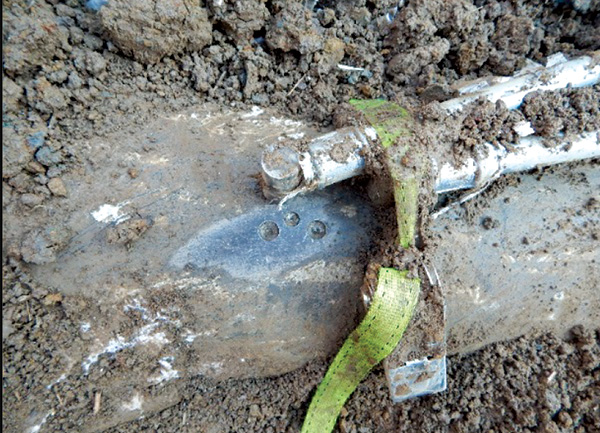
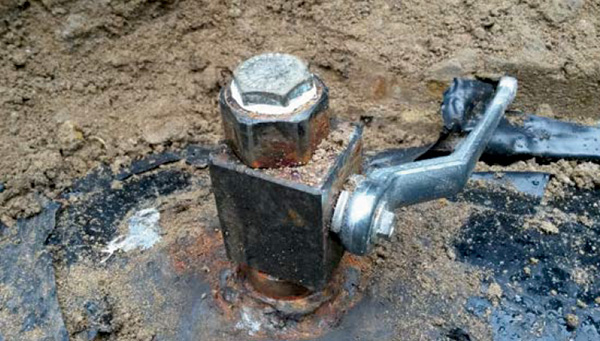
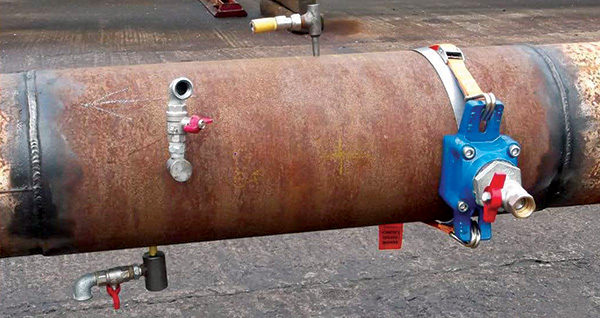

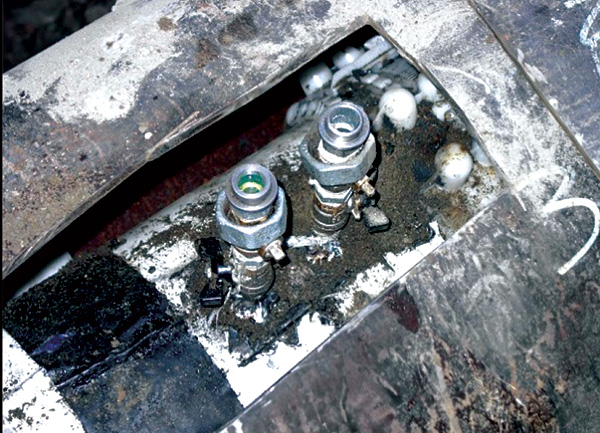

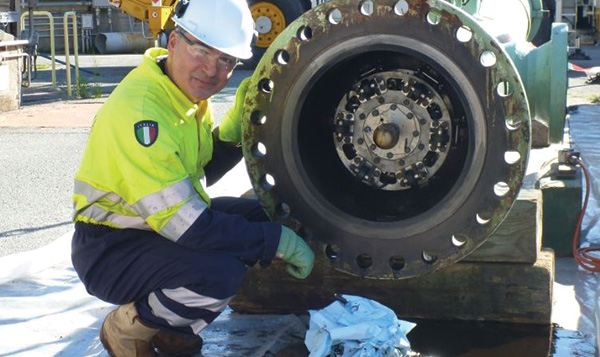


Comments